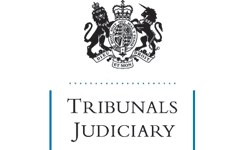|
Notes:
|
Reported as [2012] AACR 26.
Practice and procedure – First-tier and Upper Tribunals in England and Wales – whether courts for purpose of vexatious litigant orders – whether, if permission required, Upper Tribunal had power to give permission
The appellant was made a vexatious litigant in 2003 by an order under section 42 of the Senior Courts Act 1981. That had the effect that he required permission of the High Court to institute or continue proceedings in any court. In 2010 he lodged appeals against four decisions of the Information Commissioner. A judge of the First-tier Tribunal struck out the appeals for lack of permission, being out of time and having no reasonable prospect of success. Another judge of that tribunal gave permission to appeal to the Upper Tribunal. The Upper Tribunal held an oral hearing to decide the preliminary issue whether the appellant needed the permission of the High Court to bring those proceedings before the First-tier Tribunal and the Upper Tribunal; and, if he did, whether the Upper Tribunal had power to give permission under section 25 of the Tribunals, Courts and Enforcement Act 2007 (the 2007 Act). The Information Commissioner relied on Re Terence Patrick Ewing [2002] EWHC 3169 (QB) (Ewing). In that case, which concerned a vexatious litigant, the court held that the Information Tribunal (whose functions were since transferred to the First-tier Tribunal) was a court. It was also noted that employment tribunals had been accepted as inferior courts for that purpose: Attorney General v Douglas (No 2) [2006] EWHC 1982 (Admin) and Ewing v The Security Service [2003] EWCA Civ 581. In Ewing the tribunal had consisted of eminent, senior lawyers who had to apply judicial review criteria to an issue of national security. In the present case, however, the Upper Tribunal had to take account of the full range of the First-tier Tribunal’s functions and not just the information rights jurisdiction (whose judicial review powers had since been repealed), and to apply to that jurisdiction the principle that the law distinguishes between a body exercising a judicial function and one exercising an administrative one: Attorney-General v BBC [1981] AC 303. The Upper Tribunal judge considered in turn the points in the summary in [40] of Ewing and their application to the First-tier Tribunal and Upper Tribunal as a whole.
Held, dismissing the appeal, that:
1. the establishment and constitution of the First-tier Tribunal and Upper Tribunal are prescribed by Parliament under the 2007 Act and the Practice Statements of the Senior President and require the presence of at least one legally qualified judicial member: cf [40.1] of Ewing (paragraph 26);
2. the duty of the tribunal is to decide whether the decision under appeal was in accordance with the law and, on appeal, the issue for the Upper Tribunal is whether that tribunal made an error of law. Powers equivalent to judicial review were a feature in Ewing but are not an essential characteristic of a court. It is not a feature of all the ordinary courts and the employment tribunal has no such powers, although those are all courts for vexatious litigant purposes: cf [40.2] of Ewing (paragraph 28);
3. all chambers of both the First-tier Tribunal and the Upper Tribunal operate under rules that are essentially similar in content and structure, consisting of a common core, and all those rules find equivalents in the rules that apply in the High Court and County Court. In terms of characteristics, the tribunal rules of procedure contain what is to be expected of the rules governing the proceedings before a judicial body: cf [40.3] of Ewing (paragraph 30);
4. the general tenor of the analysis and conclusions in the BBC case was consistent with the classification of the First-tier Tribunal and Upper Tribunal as courts. The proper classification of a body as a court was ultimately a matter of impression, the other matters being merely factors that help to inform the analysis that underlies that impression: cf [40.4] of Ewing. The tribunal in Ewing was very much at one extreme of the spectrum of the range of courts, but a consideration of the wide range of cases that come before the First-tier Tribunal and the Upper Tribunal both across their chambers and specifically in their information right jurisdiction led to an overall impression that those tribunals were courts for the present purposes (paragraphs 32 to 34);
5. section 25 of the 2007 Act confers on the Upper Tribunal the same powers, rights, privileges and authority as the High Court in relation to specific matters (not applicable in the present case) and “all other matters incidental to the Upper Tribunal’s functions”. That provision cannot override express statutory provisions that confer powers on the High Court. It was inconceivable that, in the context of the numerous amendments to other legislation made by the 2007 Act, that general provision could have the effect of overriding statutory provisions that were expressly limited to the High Court. Furthermore the word “incidental” was suggestive of something subordinate or secondary to the functions of the Upper Tribunal. However, permission for a vexatious litigant was an essential prerequisite to the court or tribunal having jurisdiction in respect of that person especially one going to the tribunal’s jurisdiction, and as such was not appropriately described as incidental (paragraphs 37 to 38);
6. the First-tier Tribunal had no jurisdiction to deal with any aspect of the appellant’s appeals unless and until he obtained permission of the High Court and the decisions of the First-tier Tribunal did not involve the making of an error on a point of law (paragraphs 1 and 46).
|
